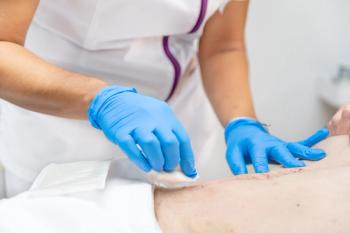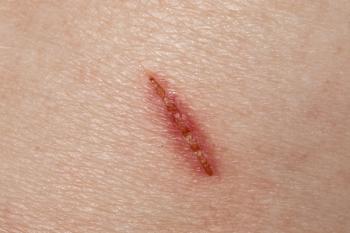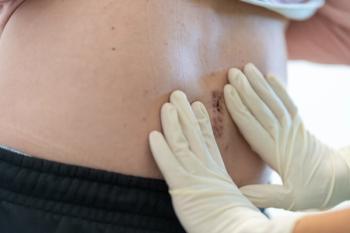
US Dermatologists Have Growth Opportunity in Wound Care
Dermatologists may not treat as many advanced wounds as would be expected.
There are approximately 2200 specialty wound care clinics in the United States, with nearly 2000 associated with hospitals. The remaining ones are private practices focused exclusively on wound care.
Additionally, there are many plastic, vascular, podiatric, and other specialists who have a heavy focus on wound care. Yet, while dermatologists see a great deal of wounds, and logically are an ideal fit for providing wound care, in general, they have not jumped in with both feet at the same rate that other specialists have—at least in the US.
Rafael Mazuz, managing director of
He theorizes that in the US, there is such a high demand relative to supply for general and cosmetic dermatology, that many dermatologists don’t feel the need to branch out to wound care.
Still, he feels dermatologists should be doing more in the US, as delivering effective advanced wound care is a combination of holistic medical care (medication adjustment, nutrition optimization, etc.), as well as localized surgical care (wound bed preparation, scar mitigation, etc.), and dermatologists tend to have a level of training and comfort in both of these worlds.
“They feel equally comfortable wielding a scalpel as they do a medication dosing chart,” Mazuz says. “This extends to procedural billing and revenue cycle management considerations, too, as the documentation required to receive payment and avoid audits is something they are more familiar with.”
Dermatologists also tend to see a fair number of wounds and related conditions in the course of their normal practice—from venous stasis dermatitis, to skin infections, to malignancies affecting the skin, these are all common in the average dermatologist’s patient census. Therefore, it should be a relatively easy transition for those looking to branch out.
One challenge for the average dermatology practice looking to get into advanced wound care is the clinical-operational complexity that can be more intense than general or other types of dermatology.
“For one, the patients themselves are often less mobile and require more time and assistance to ambulate within the clinic,” Mazuz says. “This is especially the case for patients with pressure ulcers and lower extremity wounds. Depending on a clinic’s patient census, a significant portion of patients and their assistive devices may not be able to access all treatment rooms, which can create a bottleneck in patient flow.”
At a minimum, the time, staffing, and other resources required to manage patients with wounds is going to be more difficult to reliably estimate and plan for than those needing facial injections, for example.
Additionally, while most dermatologists see a fair amount of patients with wounds and related conditions, the referral patterns might not be as well-developed, and can take time to establish.
“Specialties like plastics, vascular, general surgery, and podiatry tend to be on the receiving end of complex wounds,” Mazuz says. “Likewise, they often take call and/or perform surgery at one or more hospitals and/or are on call in emergency departments. For dermatologists that do not spend much time in hospitals, it can be difficult to become known in the community as a wound care specialist.”
For those wanting to increase their wound care business, he recommends that dermatologists join the panel of an interdisciplinary wound care center, which will allow them to potentially practice just a few hours per week, while learning about all of the advanced products, diagnostics, and other modalities, as well as tap into an existing patient population.
Newsletter
Like what you’re reading? Subscribe to Dermatology Times for weekly updates on therapies, innovations, and real-world practice tips.

















